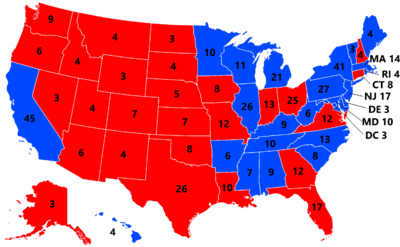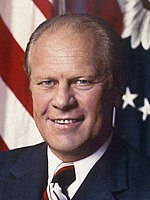1976 United States presidential election (ASITD)
| |||||||||||||||||||||||||||||
538 members of the Electoral College 270 electoral votes needed to win | |||||||||||||||||||||||||||||
|---|---|---|---|---|---|---|---|---|---|---|---|---|---|---|---|---|---|---|---|---|---|---|---|---|---|---|---|---|---|
| |||||||||||||||||||||||||||||
 Presidential election results map. Red denotes states won by Ford/Bush and Blue denotes those won by Muskie/Humphrey. Numbers indicate electoral votes cast by each state and the District of Columbia. | |||||||||||||||||||||||||||||
| |||||||||||||||||||||||||||||
The 1976 United States presidential election was the 48th quadrennial presidential election. It was held on Tuesday, November 2, 1976. Incumbent U.S. President Edmund Muskie was re-elected, though by a reduced margin from his landslide win earlier in 1972. He became the first President since Franklin Delano Roosevelt to be re-elected by a reduced margin in both the popular vote and electoral college, and the first President since Dwight Eisenhower to be re-elected to a second consecutive term.
The Democratic Primary led to Edmund Muskie's uncontested re-nomination, while among Republicans, Gerald Ford beat out RNC Chair George H. W. Bush, and Former Governors Ronald Reagan and Nelson Rockefeller to be nominated at the Republican National Convention. The election was widely seen as a referendum on "Muskiecare", the public health care option implemented under President Muskie.
Ultimately the election was incredibly close, as Gerald Ford lost his home state of Michigan (tipping point state) by less than 1%. Despite this, Gerald Ford accomplished the feat of flipping back twenty-seven states into the Republican column, with one, Utah, swinging by as many as 67 points from D+27 in 1972 to R+40 in 1976.
Vice President Humphrey would go on to become the eighth Vice President of the United States to die in office when he passed away in January of 1978.

